
Starting your Digital Transformation Journey
Getting started on a project is often the hardest part. When the project is as substantial as enterprise digital transformation, the first step can feel crushing.
Two of the founders, Meighan Newhouse & Amir Azarbad, sat down to discuss getting transformations off the ground. Note: This conversation took place in early 2020 prior to the pandemic.
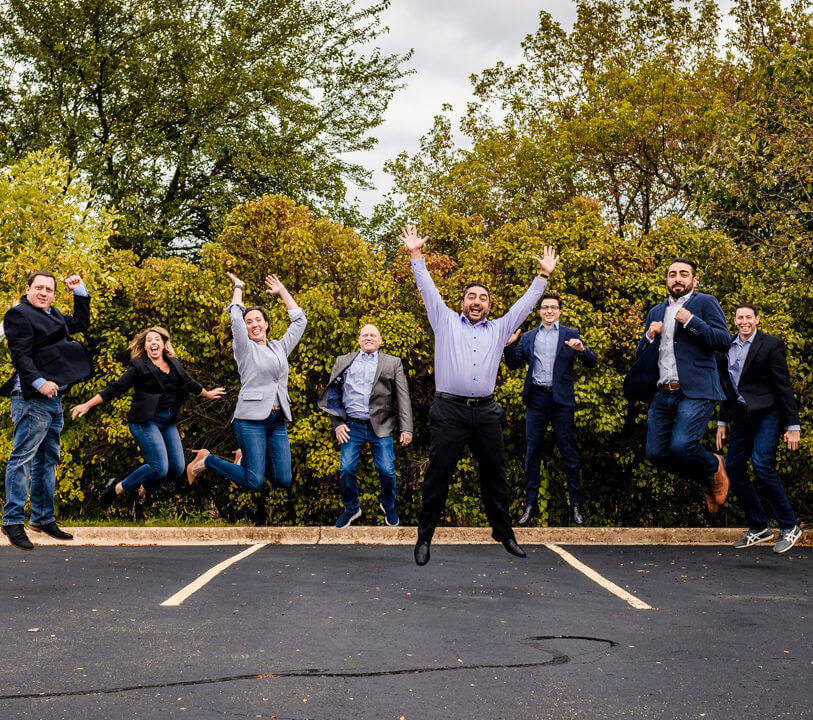
Full Disclosure: I only curate articles that meet my seal of approval. Having said that, this article is special as in my cousins, Amir & Armin Azarbad are Unconsultants at Inspirant Group. Disclaimers: all curated articles surpass the threshold of my own opinions, sponsors are acknowledged. Not financial advice, for entertainment purposes only. Having said that, Inspirant Group, Inc. is everything I would like to emulate, starting with the growth mindset in the niche of data, technology & transformation. Splendid insight & nuance from inspiration to transformation.
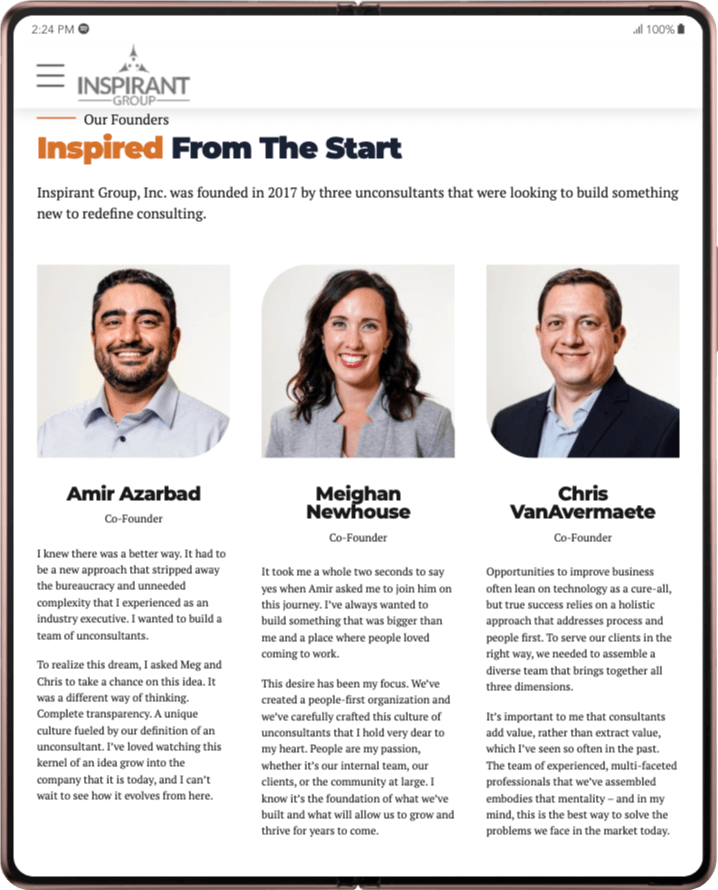
Here is the video of their interview. Or, if you’d rather read, an abridged transcript of the conversation follows.
As a note, this conversation was recorded in early 2020, pre-pandemic, & the points in the discussion are just as relevant if not even more so as we look ahead in 2021.
Meighan Newhouse: Hi, welcome to the first in a series that I think we’re going to call Ask an Unconsultant. My name is Meg Newhouse & I’m here with Amir Azarbad, my friend, co-founder & co-partner at Inspirant Group. & today I’m going to ask him some questions about how to prepare for transformation in 2020.
I thought as we get started in the new year, it might be fun to think about, reflect on 2019 & to help our clients and others think about what they should plan for in 2020. I know you’ve always talked about the idea of the journey. Maybe you can explain a little bit about what the journey means for folks going through a transformation.
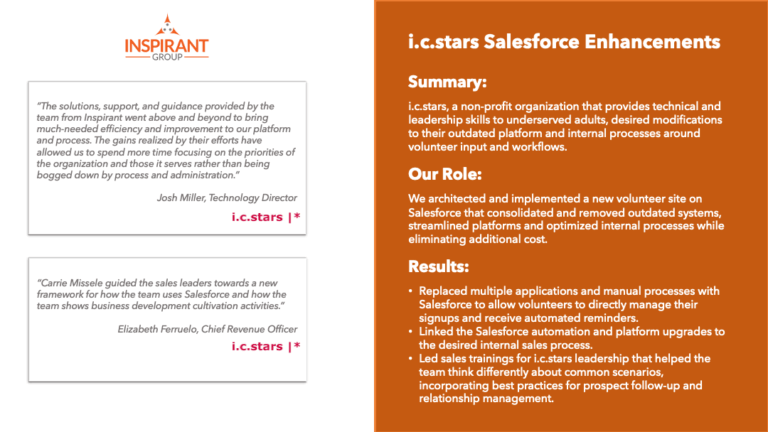
How do they get started?
Amir Azarbad: Let’s focus on the transformation journey itself. At most companies, the way these conversations usually go is the CEO comes into the CIO’s office & says, “This technology sucks. We need something new. Let’s go.” & the CIO typically goes to his or her team & starts asking questions like, “We need to fix this. What’s the best solution out there? Who do we know in the market?” & what that always ends up doing is bringing in the same set of people, the same set of technologies, the same set of conversations that have happened historically. & everyone jumps to, “Let’s invest in a new technology platform. Let’s pull a product off the shelf & off we go.” The short answer & simple answer to your question is, “Start with the end in mind.” Don’t jump to the technology.
Ultimately, the question is not what technology ails you or what your people lack in skill sets or what processes you don’t understand, but rather, “Where do you want to be three years down the road?” & if you start to really map out what three years down the road looks like, & then short term one year & figure out how you measure success, that really starts you in kind of taking that first journey transformation step, if you will, which is ultimately prioritizing the work you want to do versus the shiniest object or the lowest hanging fruit that might not always yield you the best results.
& that’s where the real trick with transformation starts. The thing that we’ve seen in the market & the kind of the gotcha, if you will, is that most folks just take existing processes & figure out, “Hey, there’s new technology. We can just start to put it on a solution.” That doesn’t work because you don’t know the process of what you’re trying to transform & you’re not even looking at it. & more importantly, something I know you’re passionate about, is the people side. You haven’t even thought about the impact to your people, both internally, externally. How would that whole organization function in this new world? Buying a product off the shelf usually is a hard thing to do because what it ends up doing is ~ you’re trying to take what is proprietary to you & try & plug it into a box & then customize it.
“Once you start to optimize your process, you now have a really good use case for a technology discussion, a people discussion & a data discussion.”
But once you start to look into your process, once you start to optimize your process, you now have a really good use case for a technology discussion, a people discussion, & a data discussion. But, until you really have a process sort of mapped out, optimized for what you want & how you want to measure based on the strategy, you really shouldn’t jump into that next layer of, “Is my workforce ready for this? Or do we have the right data?” & ultimately, “what is the technology solution that we’re going to use?”

MN: Well, so I want to go back. I think it’s easy for us as consultants (or Unconsultants) at a 20,000-foot level to say, these are the things that you need to do, executive person or manager person. But I think about being in that role, which I know we’ve been in. All of these things coming at you. You said it yourself — juggling 50 different things. [They’re thinking]: “I just want to implement the easy solution.” Maybe it’s, “My technology is at end of life and I just need to go to the next version.” Or, “This thing does seven of the 14 things that I want it to do. So that’s good enough for now, because I got to get it going.”
So, what kind of advice do you have for people to kind of step back & … well, do you have any experience when you were in that seat? What did you experience when you were trying to get those things pushed through? & the difference between doing that & stepping back & actually being thoughtful & planful about what that looks like.
AA: Yeah, I’m guilty as charged. I actually was that same business executive who was pushing everybody to get things done quickly & not willing to spend time. This conversation needs to be split up into sort of a large enterprise discussion organization (because there it’s a whole different politics & culture & sort of environment that folks operate in) versus the middle small type businesses that are looking to transform.
& so, let’s focus on the large enterprise. The directives come from above. Very rarely do you get a chance to sit & look at one process or observe one thing. So, what I would recommend to folks as they start a new journey, it’s to really try to push & pilot & show & demonstrate value in the new way of doing things. Potentially change a process, train a new staff member. Get a new skill set. For some of you folks, it’s show value in a small sort of organic way & let that organically grow, if you will.
MN: I learned that early on. I’ve been known to want to boil the ocean, you know, big dreams, right? But I’ve had lots of coaching & mentoring in my career to say start with a small pilot & show the success & kind of build that energy at a smaller level & grassroots, which can be hard to do, I think, in larger organizations. But you can even do that in a large organization.
“There is a tipping point where you get to the top of the mountain & everyone understands the value of transformation, how to do business differently, how to be nimble & agile.”
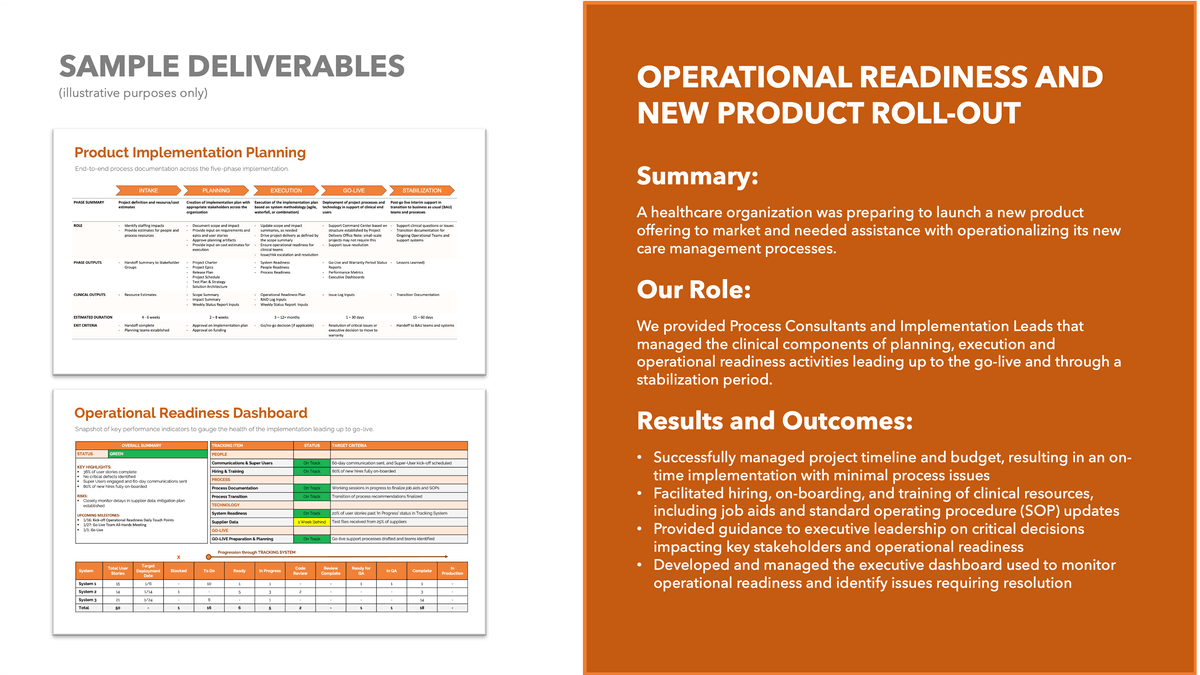
AA: At the end of the day, what you’re trying to show is that you have the capability to do something differently. Transformation in a large organization is a very difficult endeavor for anybody to take on. Well, once you get that going, once you get the transformation started & you get people on board–digital transformation in a large enterprise is pushing a boulder up a mountain. It’s really hard. & you can have as many people trying to push it up there, but that boulder is as heavy as it could possibly going up there. There is a tipping point where you get to the top of the mountain & everyone understands the value of transformation, how to do business differently, how to be nimble & agile. & once that boulder falls on the other side & everyone wants it, your challenge then as an organization is trying to figure out how to slow it down. Cause just as hard as it is to get it started, it’s hard to make sure that you do the right things when you scale & you grow.
You need to leverage your credibility to really push everyone to understand the importance of governance, the importance of building people, the importance of understanding what your processes are & to not have you find yourself in a place in three to five years where you’ve made so many bad decisions–technologically or process or people wise–that now you have this significant digital debt. You really don’t want to lose control of that boulder. Because if you do, in five years, you’re right back to where you were ~ the solutions don’t make sense, processes aren’t understandable here, people don’t know how to support it. & you’re back to square one.
MN: It sounds like that initial roadmap, that planning, is really essential for people getting started. & then for those who may already be in there, if they haven’t had the opportunity yet to sit down & do that roadmap. Now might be a good time to do that–think about where they are in that process & how to keep it going in the right direction.
AA: There’s also this notion that transformation requires agility & it requires a transformation in the way you approach implementation.
MN: You know, the culture will change. The cultural change, the expectations will change, & roles will change. One of the transformations we’re talking about now, the average tenure in this organization is 20 years. So to go from, “Well this has always worked this way.” You know, the, “if it’s not broke, don’t fix it” to ”We’re going to do things differently & more efficient” causes a big change. & people can get scared when there’s change.
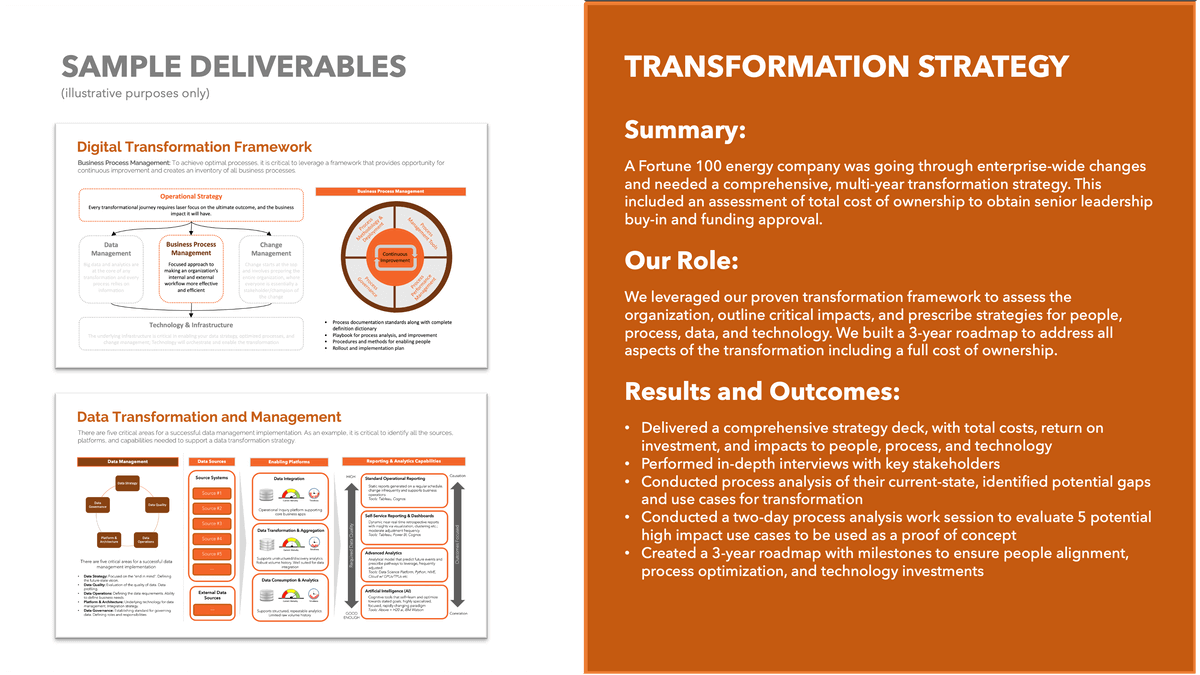
AA: Your people are inherently going to put up roadblocks because they’re worried about their job security. They are like, “This is the way we’ve done it. Why are we changing?” & one of the biggest mistakes that enterprises make is ignoring the fact that your people need to have new skillsets, new training, new way of doing things, & if you don’t keep them involved through change management early on through learning opportunities, what you’re going to get is a lot of resistance every step of the way.
So that’s, that’s sort of your large enterprise organization type folks. The smaller middle size businesses, they have a whole different problem. It’s a capital conversation. We’ve seen, in a lot of these organizations, they’re willing to invest in their people. They are nimble & they can move & they enjoy the conversations of looking at processes & all that.
They don’t have old legacy systems that are completely hard to integrate with. What they’re ending up with is, “I know that we need this Excel spreadsheet automated. We know that this access database is not scalable, & we know our workforce is out there & then they need to be mobile & they need to be able to do X, Y, & Z.” Right? There’s all of these sort of usability type discussions & needs that are coming up in these small & midsize organizations. Delivery is not an issue. It’s just about capital investment that make it a lot more difficult for them to transform.
For those folks, I think that the more important part is, is start small. Don’t boil the ocean. They’ll go in there & trying to completely overhaul it. But take one use case, take one scenario, uild it, take another scenario, build it. & this way you’re spreading the investment out over multi-year sort of plan. But what you’re getting is immediate returns every six to eight weeks.
So, we start with the end in mind. Always, no matter what size organization you are. But the approach of how you get to that end…it’s different for a small midsize company than a large enterprise company.

MN: That’s what I was going to say, I mean, it sounds like the roadmap for anyone really. You just have to be planful about it, but the smaller companies, if it is the capital flow is an issue, then maybe they just choose one. They have to prioritize: “which one of these do we want to accomplish first to show the value, to show the worth?” & maybe they can only do one or two small projects a year, but at least they’re moving the boulder in the right direction.
“Every step of the way, it’s important to take a look at where you are on that journey & make sure that you are still going down the right path.”
AA: I think that the ultimate take away from all of this conversation is that transformation is hard no matter who you are & what you’re trying to do. & every step of the way, it’s important to take a look at where you are on that journey & make sure that you are still going down the right path. Everything aligns back to your roadmap, back to where you where you sort of had that end in mind. & every decision you’re making is focused not just on the technology but on your people & process. & ultimately back to your strategy & where you see yourself in five, three, one year, whatever that roadmap looks like. Because you can keep investing in technology, keep doing transformation type stuff, see results & everyone can be happy about it. But ~ are you ultimately driving towards being that company that’s unique in the marketplace as a value proposition? & you are ahead of your competitors in terms of, what it is that you’re delivering to your customers?
MN: I am all about new year’s resolutions. I look at the new year as a fresh start. I love starting new. You can look ahead. What did I do last year? Reflect on what you did last year & how you can improve on that. & so I think, this is a really cool conversation to reflect on what 2019 looks like, how we can plan for 2020.
I’d say for leaders who feel overwhelmed, who don’t think they have enough time to sit & plan things out, now’s a good time to assess what you spend your time on & see where the focus should be to make these projects successful going forward.
“ A firm's capacity for growth has an important influence on its survival. One obvious connection between growth and longevity follows from our previous discussion of multiple assets. A small firm that relies just on the labor of its proprietors is vulnerable to the loss of their skills or motivation. To establish a more lasting source of profit than the effort of the owners can provide, the firm has to invest in assets such as proprietary technologies or brand names, increase its customer base to amortize this investment, and add employees commensurate with its expanded activities.” ~ Curated Excerpt From: Amar V. Bhidé. “The Origin & Evolution of New Businesses.” Apple Books.
Curated via Inspirant Group, Inc. Small Firm Agility, Big Firm Expertise. Thanks for reading, cheers! (with a glass of wine & book of course)

2014 Lawer Napa Cabernet Sauvignon
Producer: Lawer Estates, St. Helena, Napa Valley, Napa County, North Coast, California, USA
"This Cabernet Sauvignon exhibits a good depth of color with various shades of red while introducing a complexity of aromas. The wine has sweet ripe fruit characters with tones of briar berry, dispersed by vanilla and chocolate nuances. Sweet berry flavors follow with pepper and vanilla attributes, evidence of the barrel maturation, with well structured tannin that completes the wine and leaves ever lingering mature flavors." ~ Lawer Estates Winery
"Slightly old-styled Napa cabernet sauvignon with dried berry and chocolate character and extracted tannins. Full body. Rich and flavorful. Needs a year or two to soften. A little overdone now. Let's wait and see." ~ 90 Points ~ James Suckling
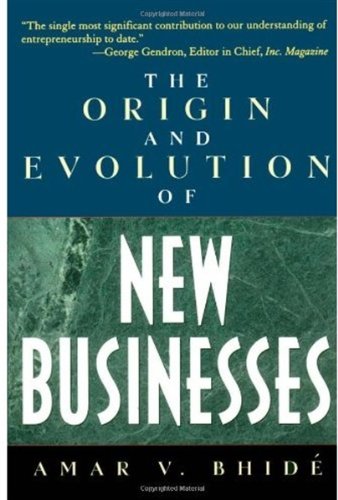
The Origin & Evolution of New Businesses
What is this mysterious activity we call entrepreneurship? Does success require special traits and skills or just luck? Can large companies follow their example? What role does venture capital play?
In a field dominated by anecdote and folklore, this landmark study integrates more than ten years of intensive research and modern theories of business and economics. The result is a comprehensive framework for understanding entrepreneurship that provides new and penetrating insights. Examining hundreds of successful ventures, the author finds that the typical business has humble, improvised origins. Well-planned start-ups, backed by substantial venture capital, are exceptional. Entrepreneurs like Bill Gates and Sam Walton initially pursue small, uncertain opportunities, without much capital, market research, or breakthrough technologies. Coping with ambiguity and surprises, face-to-face selling, and making do with second-tier employees is more important than foresight, deal-making, or recruiting top-notch teams.
Transforming improvised start-ups into noteworthy enterprises requires a radical shift, from "opportunistic adaptation" in niche markets to the pursuit of ambitious strategies. This requires traits such as ambition and risk-taking that are initially unimportant. Mature corporations have to pursue entrepreneurial activity in a much more disciplined way. Companies like Intel and Merck focus their resources on large-scale initiatives that scrappy entrepreneurs cannot undertake. Their success requires carefully chosen bets, meticulous planning, and the smooth coordination of many employees rather than the talents of a driven few.
This clearly and concisely written book is essential for anyone who wants to start a business, for the entrepreneur or executive who wants to grow a company, and for the scholar who wants to understand this crucial economic activity.

